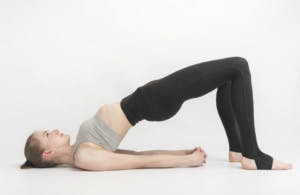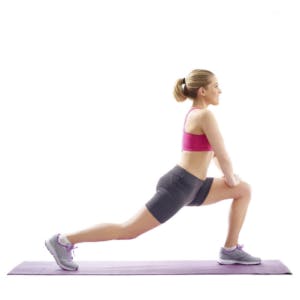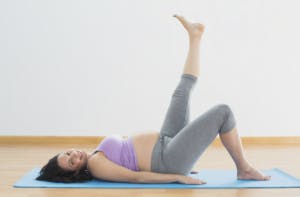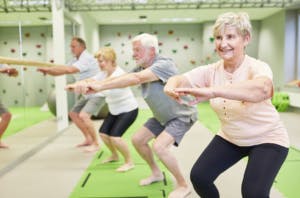 Introduction
Introduction
At Altitude Physical Therapy, we understand how debilitating hip pain can be, especially when it interferes with your sleep. A good night’s rest is essential for overall health and well-being, but hip pain can make it challenging to find a comfortable sleeping position. In this blog, we’ll explore tips and strategies to help you sleep better despite hip pain, so you can wake up feeling refreshed and ready to tackle your day.
Understanding Hip Pain at Night
Hip pain at night can result from various conditions, including osteoarthritis, bursitis, tendonitis, and muscle strains. The discomfort can make it difficult to fall asleep or cause you to wake up frequently throughout the night. The key to better sleep lies in addressing the root cause of the pain and making adjustments to your sleeping environment and habits.
Tips for Better Sleep with Hip Pain
1. Choose the Right Mattress
A supportive mattress is crucial for alleviating hip pain. Here’s what to consider:
- Firmness: A medium-firm mattress provides the right balance of support and comfort, helping to maintain proper spinal alignment.
- Material: Memory foam or latex mattresses conform to your body’s shape, reducing pressure on the hips.
2. Find a Comfortable Sleeping Position
Your sleeping position can significantly impact your hip pain. Here are some positions to try:
Side Sleeping with a Pillow Between Your Knees: Placing a pillow between your knees helps keep your hips aligned and reduces pressure on the affected hip.

Back Sleeping with a Pillow Under Your Knees: This position helps maintain the natural curve of your spine and reduces strain on your hips.
Avoid Stomach Sleeping: Sleeping on your stomach can exacerbate hip pain by putting additional strain on your lower back and hips.
3. Use Supportive Pillows
Pillows can make a significant difference in your comfort level:
- Body Pillow: A body pillow can support your entire body and help maintain proper alignment.
- Wedge Pillow: A wedge pillow under your knees while lying on your back can alleviate pressure on your hips.
4. Maintain a Regular Sleep Routine
 Establishing a consistent sleep routine can improve your overall sleep quality:
Establishing a consistent sleep routine can improve your overall sleep quality:
- Go to Bed and Wake Up at the Same Time: Keeping a regular schedule helps regulate your internal clock.
- Create a Relaxing Pre-Sleep Routine: Engage in calming activities before bed, such as reading, gentle stretching, or taking a warm bath.
5. Manage Pain with Heat or Cold Therapy
Applying heat or cold therapy before bed can help reduce hip pain:
- Heat Therapy: Use a heating pad or take a warm bath to relax tight muscles and improve blood flow.
- Cold Therapy: Apply an ice pack to the affected area to reduce inflammation and numb the pain.
6. Practice Gentle Stretching and Strengthening Exercises
Incorporating specific exercises into your daily routine can help alleviate hip pain over time:
- Hip Flexor Stretch: Gently stretch your hip flexors to relieve tension.
- Glute Bridges: Strengthen your glute muscles to support your hips.
- Hamstring Stretches: Keep your hamstrings flexible to reduce strain on your hips.
7. Seek Professional Help
If your hip pain persists despite trying these strategies, it may be time to seek professional help. At Altitude Physical Therapy, our experienced therapists can provide personalized treatment plans to address your specific needs and help you achieve better sleep.
Conclusion
Sleeping with hip pain can be challenging, but with the right strategies and support, you can improve your sleep quality and reduce discomfort. At Altitude Physical Therapy, we are dedicated to helping you manage your hip pain and enhance your overall well-being. If you’re struggling with hip pain, contact us today to schedule an assessment and start your journey to better sleep and improved health.
For more information, visit our website at www.altitudept.com.


 Introduction
Introduction Hip problems can arise from various causes, including injury, overuse, and medical conditions. Here are some common issues:
Hip problems can arise from various causes, including injury, overuse, and medical conditions. Here are some common issues: Physical therapy plays a crucial role in managing and treating hip pain. At Altitude Physical Therapy, our experienced therapists tailor treatment plans to meet your specific needs, aiming to reduce pain, restore function, and improve your quality of life. (
Physical therapy plays a crucial role in managing and treating hip pain. At Altitude Physical Therapy, our experienced therapists tailor treatment plans to meet your specific needs, aiming to reduce pain, restore function, and improve your quality of life. ( 1. Bridging for Glute Strength
1. Bridging for Glute Strength
 3. Leg Circles to Promote Hip Mobility
3. Leg Circles to Promote Hip Mobility 4. Squats for Overall Hip Conditioning
4. Squats for Overall Hip Conditioning 5. Side-Lying Leg Lifts for Muscle Balance
5. Side-Lying Leg Lifts for Muscle Balance